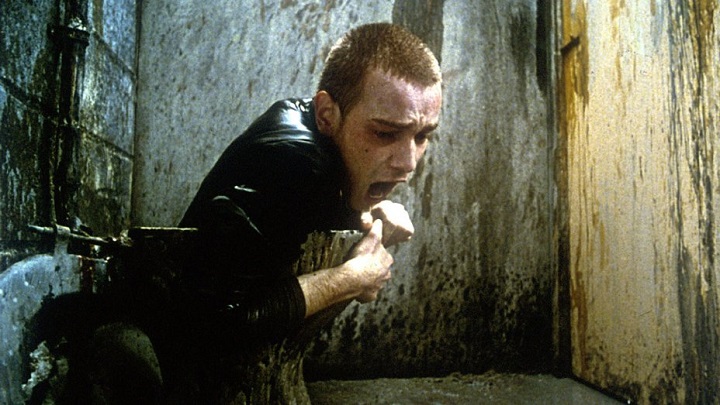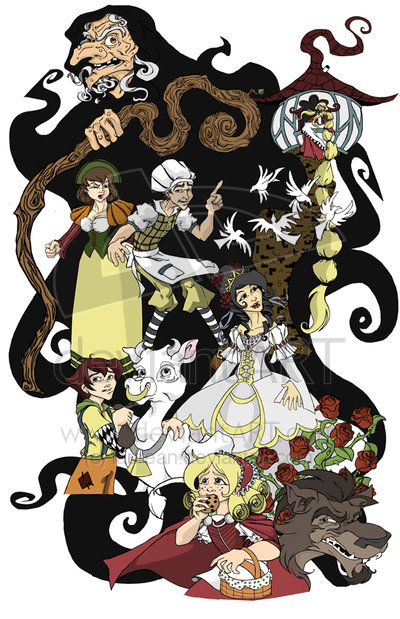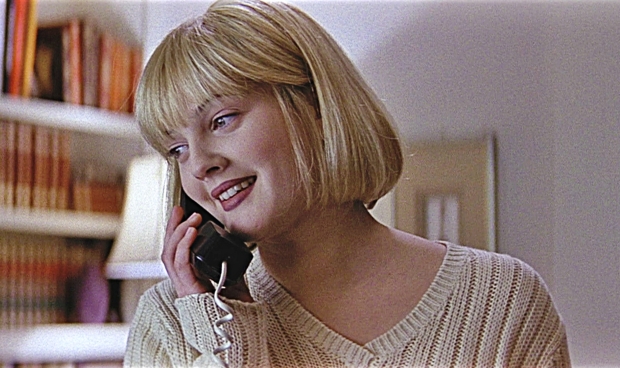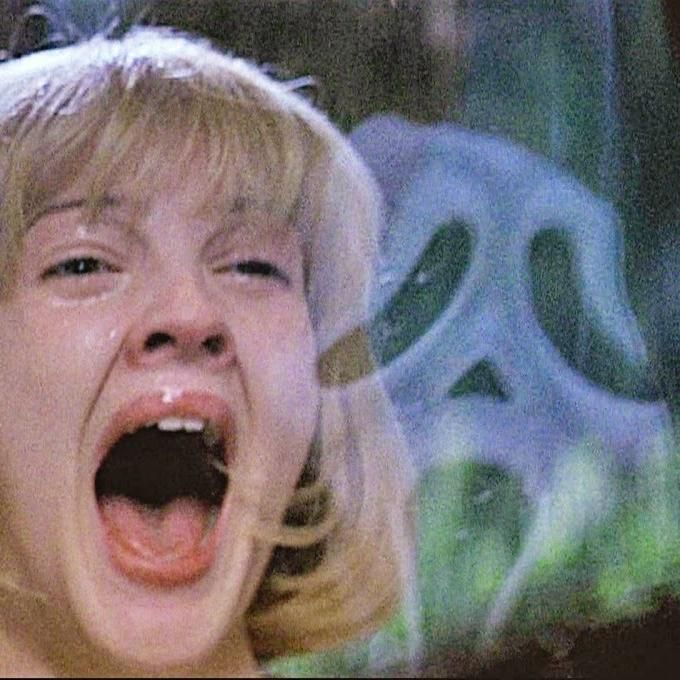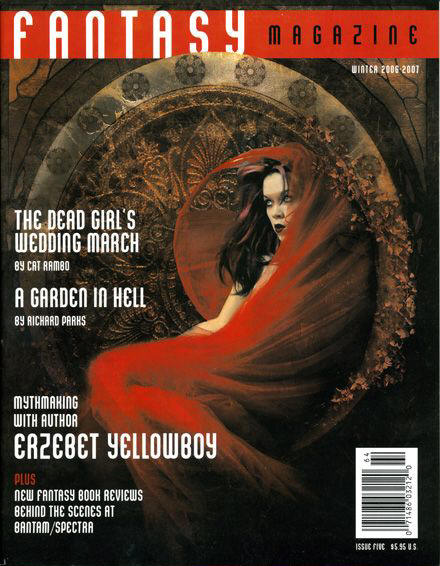Things Your Writing Teacher Never Told You: The 9 Aspects of Story Promise
At a novel writing boot camp I attended many years ago, at our first gathering, opening scenes written by each participant were read anonymously. One has stayed in my mind. It was a humorous gross-out scene that was literally bathroom humor. It was crass, and nearly everyone found it hilarious. I was one of the few who didn’t love it. At the time, I couldn’t explain what bothered me about it, beyond the fact that I don’t care for gross-out stuff or bathroom/body-fluids humor. Though I couldn’t find the words at the time, it wasn’t the indelicate content that was ultimately bothering me.
Only years later did I have the vocabulary and technical understanding I needed to put it into words: I doubted that it was an accurate Story Promise. Was the rest of the book going to be that scatological? Could the author maintain that high-energy gross-out humor for an entire novel? (Certainly, there are authors who can, but it’s a rare gift.)
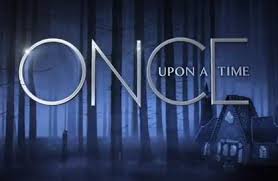 I dimly remember hearing a story about a young musician who got to play live with his idol. He got to solo on the first song, and he pulled out all the stops, did every twist and flare he knew. The audience ate it up. When the applause finally died down, the old man said (paraphrasing), “Son, that was great, but what are you going to do for the second song? You gotta save some back so you have something to build to.”
I dimly remember hearing a story about a young musician who got to play live with his idol. He got to solo on the first song, and he pulled out all the stops, did every twist and flare he knew. The audience ate it up. When the applause finally died down, the old man said (paraphrasing), “Son, that was great, but what are you going to do for the second song? You gotta save some back so you have something to build to.”
I believe the novelist-in-training and the young musician had done the same thing: they’d given a false Story Promise that was bound to disappoint the audience because inherent in Story Promise is that the things being introduced will be built upon, and that includes raising the stakes.
The opening paragraphs of a story, the opening few pages of a novel, (or the opening strains of music or the first few minutes of a film, TV show, or play) make some overt promises to the audience that need to be fulfilled by the end of the piece. Breaking those promises can leave readers feeling dissatisfied if they read the entire story, or cause them to give up on the piece before it’s complete if progress is not being made along the way to make good on those promises.
That does NOT mean the story should be formulaic or predictable. Unexpected turns can and should happen along the way. But when the end comes, those turns and twists should make sense. And the reader should be able to look back at the opening sequence and feel like the promises were kept.
Knowing what promises need to be made to the reader can help writers figure out who and what to put in the opening scenes.
My list of elements in the Story Promise are specifically geared toward writing Fantasy, but the list can be easily modified to fit other commercial or literary genres.
These do not have to appear in the story in this order. They do not all have to be included in the opening sequence, but most should likely be there. Some may be hinted at rather than being spelled out in detail.
- Fantasy Element – Is this a world with magic or monsters, talking animals, a witch’s apprentice, a kraken about to eat a pirate ship, or a ghost in the well of the old farm a family just bought? If it’s a world with both vampires and zombies, some hint of that should be established. You can’t go three-quarters of the way through a story being solely focused on vampires, then pop zombies out of a hat in the final act.
In the story “The Words the Rain Wrote” (Fantasy Magazine, Winter 2006-2007 issue) January Mortimer did a very elegant job of delaying the reveal of the true Fantasy Element until somewhere between 1,500-2,000 words into the story, but she was layering in fantastic elements in those intervening paragraphs. That this is a world of magic and magical creatures is established in the second sentence. Here’s her opening paragraph:
The high school: a cement block, small-windowed and drafty. I drove Mick there every day, pulling up to the gates where eldritch runes smouldered on the dun-bricks, keeping the boggles and the magic and bad world away.
- Introduction to the Fantasy Element Rules – You don’t want to do a brick of exposition saying in great detail, “My vampires sparkle and they feed on negative energy, blah, blah, blah.” But, you might show a vampire rising at 10 a.m. from their coffin, doing the normal morning routine, then stepping outside and making like a disco ball in the sunlight, with the reflected light blinding a driver and causing a car crash, which makes the vampire smile, and feel stuffed to bursting after loitering around absorbing all the negative emotions.
- Primary Characters – With some specific exceptions, the opening scene should feature the protagonist and often an additional primary or secondary character, possibly the sidekick, or maybe the antagonist. Readers expect the first character they interact with to be the character they should bond with. It will feel like a bait and switch if it’s only a secondary character, or a throw-away character who doesn’t appear in the rest of the story.
In “The Words the Rain Wrote” Mick and the person telling the story (the “I”) are the two primary characters.
The frequent exceptions to this are certain types of mysteries, crime stories, or horror. In those genres, the first person we see may be the victim, and the opening sequence is their murder. This was particularly well-done with the first Scream movie. Her murder is barely on the radar for the characters, but it was a perfect Story Promise from the movie to the audience. Opening with the crime sequence – whether murder, abduction, or heist – is a staple for television mystery and crime shows. For most other stories, the first character encountered should probably be your protagonist.
- POV (Point of View) – Who’s telling the story? For short genre stories, there’s often only one narrator. That’s the most expedient and efficient way to reserve the word count for the twists and turns of the plot.
The POV character is nearly always the protagonist or the protagonist’s sidekick.
Sometimes my students come up with nifty story ideas, but they’re unclear about which character should be the protagonist. The simple way to identify that is to ask Who owns the problem? This also means that character should be the one who has the learning arc and ultimately solves the problem, even if they get a little help from their friends.
In “The Words the Rain Wrote” the Plot (major actions) is about Mick’s addictions, but the Story is about how the POV character, Mick’s father, deals, or fails to deal, with his son’s addictions.The exception to the single POV choice, again, often comes from mystery or crime stories, where the protagonist and antagonist may alternate as the POV characters, or in romances, where both partners may take turns as the POV character. In all cases, this dueling POVs happen more often in longer works than in short stories.
[See my series on Choosing Your Narrative Point of View for more on POV choices. You can find Part 1 here: Choosing Your Narrative Point of View, Part 1: A Few Questions to Get You Started]
- Voice – This is the narrative voice, whether that’s a first-person narrator or an omniscient narrator. While character’s emotions can ebb and flow or have sudden dramatic changes when calamity strikes, the narrative voice still needs to have a cohesive feel. It should not sound as if one person started narrating the story then suddenly stopped and handed it over to someone else to finish… unless it’s a Dr. Jeykll and Mr. Hyde story.
If “The Words the Rain Wrote” had been narrated by Mick, his narrative voice would have had to change based on whether he was clean, sober, or high. Even his narrative voice for the highs would change as he changed drugs. That’s a change in voice that is not only justified by the plot, it’s dictated by it.
As always, these comments are things I believe to be generally true, but there are exceptions to every rule.
- Tone – This is for the overall piece. This speaks to the issue I raised about that bathroom sequence from novel writing boot camp. Stories that start out with one tone or stylistic voice and then dramatically switch generally don’t work well. This is especially true if it occurs without warning near the end of the story. It feels like a bait and switch. If the story starts as sparse as a Hemmingway novel, it shouldn’t suddenly turn into flowery prose…unless it’s a first person narrative and that change in voice is overtly caused by something in the plot. The opening sequence should at least foreshadow the tone and what’s to come.
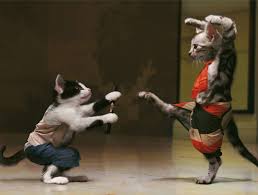 Conflict – The story doesn’t have to start with a fight scene, and probably shouldn’t. (Unless it’s cats doing martial arts, then always start with cats doing martial arts.)
Conflict – The story doesn’t have to start with a fight scene, and probably shouldn’t. (Unless it’s cats doing martial arts, then always start with cats doing martial arts.)
We need to get to know the characters before violence happens, otherwise, the violence just feels gratuitous because we aren’t rooting for a particular character. Having an argument in the opening scene isn’t a bad way to start, but you don’t necessarily need to be so overt. It may only be a gentle foreshadowing.
Look again at the opening two sentences of “The Words the Rain Wrote.” That beautifully foreshadows the conflict of the story: a parent and school’s inability to protect Mick, a young teen, from the perils of magic. We don’t learn that his problem is addiction until almost 250 words into the story. After the two opening sentences that make up the first graph, we get a short scene of what the Hero’s Journey calls the “Ordinary World.” In this case, it’s the dad driving his son to school on a rainy day. But there is enough conflict hinted at in the opening graph, and in small bits of foreshadowing and symbolism, to know that danger is looming. The next reference to magic comes 300 words later, and the ultimate reveal of the central problem comes another 350 words after that, so almost 1,000 words into the story, but the text had been gradually building to that in a way that felt completely natural. That subtle hint at the beginning was all we needed to establish the Conflict portion of the Story Promise.
- Characters’ Goals – These are tied up with the conflict. The protagonist and antagonist will have goals that directly conflict. In “The Words the Rain Wrote” Mick himself has conflicting goals. To at least some extent, he wants to get clean and stay that way, but that’s at war with the good feelings he gets from his various addictions. The father wants his son to get clean, but he also wants to find some way to emotionally cope with the ongoing conflict, and to make some sort of peace with the situation, though that may be impossible if Mick doesn’t get clean.
- Setting – This may be a specific room or location that is relevant and important to the story. Or it may be a broader interpretation of the concept of setting that establishes a different world or planet or a date in the distant past or far-flung future. It may establish a specific type of community: a college campus, a reality TV cast, from models to pawn shop owners to rock stars. Maybe it’s a roller derby team, which might best be shown with an opening scene with the protag skating the course, changing in the locker room, or riding the team bus.
For a novel, you would not only include all these aspects of Story Promise in the first chapter, you’d also have to revisit the elements of Story Promise each time a group of new characters is introduced. There will often be 2-3 chapters that introduce a cadre of a characters. The conflict and goals and the accumulation of compatriots for both the protag and antag will be tied in with each batch of new characters.
If you’re skeptical about these guidelines for Story Promise, I encourage you to check some of your favorite stories, novels, TV shows, films, and plays. Read the ending, (or watch the media) then go back and reread the first few paragraphs of a short work or first few pages of a long work and see if all those promises weren’t fulfilled.
If you’ve enjoyed this blog, you might also like some of the other blogs I’ve written on craft, including:
A Look at How Peter Straub Crafts His Opening Chapters
Researching the Tropes
Seven Common Approaches to Stories That Use Mythology, Fairy Tales & Other Established Source Material
It Was Only A Dream…
Story in Its Many Forms
When the Form Is the Story
The Skeleton Matters (Or, Why It’s Not OK to Skip Scenes in Your Third Act)
Tina L. Jens is a 2017 Rubin Family Fellowship for a residency at the Ragdale artists retreat. She has been teaching varying combinations of Exploring Fantasy Genre Writing, Fantasy Writing Workshop, and Advanced Fantasy Writing Workshop at Columbia College-Chicago since 2007. The first of her 75 or so published fantasy and horror short stories was released in 1994. She has had dozens of newspaper articles published, a few poems, a comic, and had a short comedic play produced in Alabama and Florida and two others chosen for a table reading by Dandelion Theatre in Chicago. Her novel, The Blues Ain’t Nothin’: Tales of the Lonesome Blues Pub, won Best Novel from the National Federation of Press Women, and was a final nominee for Best First Novel for the Bram Stoker and International Horror Guild awards.
She was the senior producer of a weekly fiction reading series, Twilight Tales, for 15 years, and was the editor/publisher of the Twilight Tales small press, overseeing 26 anthologies and collections. She co-chaired a World Fantasy Convention, a World Horror Convention, and served for two years as the Chairman of the Board for the Horror Writers Assoc. Along with teaching, writing, and blogging, she also supervises a revolving crew of interns who help her run the monthly, multi-genre, reading series Gumbo Fiction Salon in Chicago. You can find more of her musings on writing, social justice, politics, and feminism on Facebook @ Tina Jens. Be sure to drop her a PM and tell her you saw her Black Gate blog.
